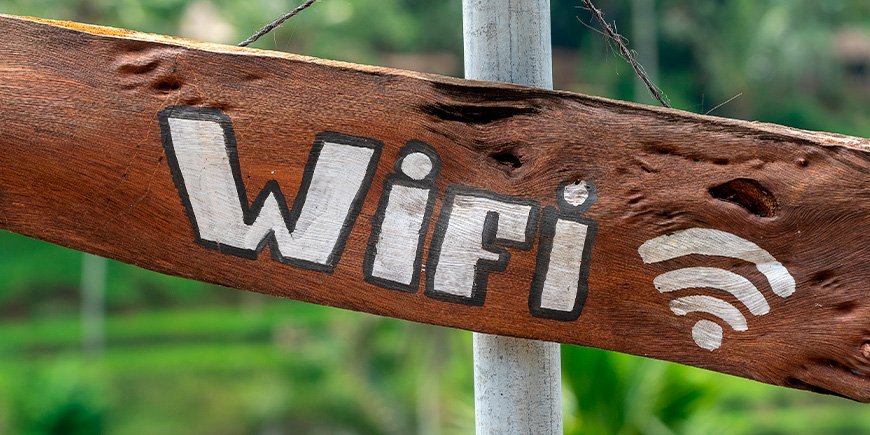- Home
-
Our tours
- Our tours
- Africa
- Asia
- Latin America
- North America
- Oceania
- Holiday types
-
Accommodation
- Accommodation
- Africa
- Asia
- Latin America
- North America
- Oceania
-
Practical info
- Practical info
- Africa
- Asia
- Latin America
- North America
- Oceania
- Info & contact
- Blog
How to stay connected while travelling
21.11.2024
For many of us, having the ability to get online or call home is a comforting safety net when we’re out exploring the world. We want to be able to stay connected to our friends and family – and fortunately, there are several ways to ensure you keep in touch with your loved ones back home.
We have gathered our top tips on how to stay connected and access the Internet on your tour.
eSIM – The flexible solution
What is an eSIM?
An eSIM is a built-in digital SIM card that allows you to switch carriers without needing to replace the physical SIM card in your phone. Many modern smartphones support eSIM, which enables you to purchase and activate a mobile plan directly on your phone. Using an eSIM means you can access the Internet without Wi-Fi, provided you are in an area with coverage.
How to use an eSIM?
Most eSIM providers offer digital solutions, where you can activate the eSIM with prepaid data packages using an app or QR code. This means you can get online as soon as you arrive at your destination. It provides flexibility and makes it easy to connect without having to visit a physical store to buy a SIM card.
Advantages of an eSIM:
- No need for a physical SIM card, making it quick and easy to get data.
- You can be online as soon as you land at your destination.
- Ability to switch providers or destinations quickly if you’re travelling between multiple countries.
Disadvantages of an eSIM:
- Requires an eSIM-compatible phone.
- It can be slightly more expensive than local SIM cards, depending on your destination.
Local SIM card – The economic solution
What is a local SIM card?
A local SIM card is a physical card that you can buy and insert into your phone upon arriving in a new country, instead of your current SIM card. This allows you to use the local network, often at a lower cost than using your home SIM card or an eSIM.
How to use it?
Upon arrival, you can purchase a SIM card from a local telecom store or at the airport. Be sure to get guidance on how to activate the SIM card and ensure it covers your data and call needs. Then simply replace your regular SIM card with the local SIM card, unless your phone has Dual-SIM capability, or you have an old phone you can bring from home.
Advantages of a local SIM card:
- Local SIM cards are widely available in telecom shops.
- Cheaper data and calls in the respective country compared to roaming.
- Better coverage and speed as you are using local networks.
Disadvantages of a local SIM card:
- Requires coverage where you are located.
- Your own number won’t work, so consider using an app like WhatsApp to keep in touch with friends and family.
- Needs to be purchased and activated locally, which can be cumbersome and time-consuming in some places, and topping it up can be difficult.
WiFi – when you need quick access
WiFi can be a great help, especially when you need to quickly check messages. Many public places like cafés, restaurants, airports, hotels, and local lodges (where coverage might otherwise be limited) offer free WiFi for you to use.
Advantages of Wi-Fi:
- Great for quickly sending messages or accessing travel information swiftly.
- Typically, the cheapest option and is often free, especially in hotels and lodges.
- You can access the Internet in places where there might not otherwise be data coverage.
Disadvantages of Wi-Fi:
- You should be mindful of security when using public networks.
Apps for staying connected
A good way to stay in touch is via apps like WhatsApp, which is also used by many of our partners. Most messaging apps only require the internet and make it easy to communicate with text, voice, and video calls.
Popular apps for travellers:
- WhatsApp – Used by many of our partners, making it easy to stay in touch, for example, if questions arise while you’re on tour.
- Facebook Messenger – Another popular option, especially if many of your contacts use Facebook.
- Zoom or Skype – two ideal apps for video conversations.
In certain countries, such as China, Facebook, and other apps may be blocked. Therefore, before departure, it might be a good idea to research which apps you can use at your destination.
If you’re looking for inspiration for other useful apps during your tour, we’ve written a blog post on 10 free travel apps you can use on your tour.
Offline apps – when you can’t get online
Even with the best precautions, there may still be areas where Internet connectivity is limited. Therefore, offline apps can be a great help.
Useful offline apps:
- Google Maps – Download maps in advance, so you can always navigate, e.g., New York, Sydney, or Cape Town, even without Internet.
- Google Translate – Has an offline function, so you can translate without using data.
- TripAdvisor, GetYourGuide or other travel apps – Provide access to your travel plans.
With these tips, we hope you feel better prepared to stay connected on your next tour. No matter which option you choose, there are plenty of ways to stay connected, wherever you are in the world.
TourCompass – From tourist to traveller

